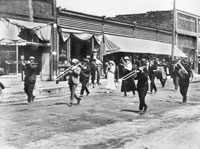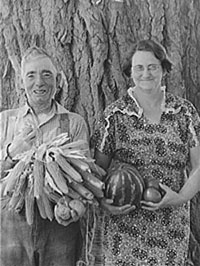|
|
|
Page 9 |
|
"Modernity" and U.S. farm women's poultry operations. Jane Adams,Southern Illinois University
|
|
|
|
 |
A few points can be made:
The ideology of modernity as an evangelical creed (10) posited a division of labor in which women were homemakers, responsible for the private domain as consumers and nurturers, while men were responsible for the public domain as producers and competitors. Although, as Ryan (1981) argues, this creed appears to have been created in large part by women in the Northeast during the 1840s, a period in which rapidly developing capitalism and attendant economic crises threw newly mobile families into crisis, it soon consolidated into an orthodoxy that eastern reformers sought to instill as the national norms. (11) The "modern" ideal of the companionate family, divided into public and private domains with a division of labor that included moral and aesthetic as well as practical dimensions, suited many members of the urban middle and upper classes. In such families, husbands could reasonably expect to provide the monetary needs of the family and the wife would shrewdly spend this money to provide the family’s domestic needs. She added value to purchased goods through her domestic labor and, in the day-long absence of the father, would be primarily responsible for care of children. Such women tended to have time to join various associations, many of which were reforming and evangelical in their missions. In this way they extended their domestic role to cultivating the morality and aesthetic sensibilities of the public sphere. (12)
Even among the urban middle classes, however, many women shared business responsibilities with their husbands and/or fathers, or had their own businesses. The sharp distinction between public and private, between (utilitarian) economy and (moral and aesthetic) domesticity, did not fit the lived order of these families' daily lives. Within their lives, utilitarian, moral, and aesthetic forms of knowing remained relatively unified. One could deduce that these women had relatively little influence on the major women's associations because their domestic and business responsibilities would leave them little time for such activities.
|
|
 |
|
|
|
"Modernity" and U.S. farm women's poultry operations: farm women nourish the industrializing cities 1880-1940. Paper presented at the international conference, The Chicken: Its Biological, Social, Cultural, and Industrial History: From Neolithic Middens to McNuggets. May 17-19, 2002, Yale University, Program in Agrarian Studies. © Jane Adams 2002
Jane Adams' Home Page
|
|
|
|
|
|
| Parade in Dongola, Illinois, n.d. Morris Library, Southern Illinois University at Carbondale. |
|
 |
|
|
|
|
|
Mr. and Mrs. Andy Bahain. 1939. Arthur Rothstein. FSA/OWI, Library Of Congress |
|
|
|
|
|
|
|
|
|
|
|
|
|
|
|
|
|

